Urban-Barry
Key facts
Geology
The Urban-Barry greenstone belt runs east-west for almost 135 km, with a width ranging from 4 to 20 km. The belt is bounded to the north by the Father plutonic suite, to the east by the Grenville province, to the south by the granitoids and paragneisses of the Barry complex, and to the west by the granitic rocks of the Corriveau and Souart plutons.
The rocks of the Urban-Barry belt are metamorphosed to greenschist facies, although near large intrusions and along deformation corridors, metamorphic conditions can reach amphibolite facies.
The Urban-Barry property consists of felsic to mafic volcanic rocks with thin sedimentary horizons that are cut by several east- and east-northeast-trending deformation zones. The Urban-Barry volcanic belt is informally divided into five restricted rock formations between 2791 Ma and 2707 Ma (Rhéaume and Bandyayera, 2006). In the central part of the belt, where the Windfall deposit is located, the volcano-sedimentary sequences are cut by a series of quartz-feldspar porphyry dykes. U-Pb zircon dating of the pre- and post-mineralization dykes return respective ages of 2698 ± 3 Ma and 2697 ± 0.4 Ma (Davis, 2016, unpublished).
Since 2016, a total of 105,925 meters have been completed on the Urban Barry property. Drilling has led to the discovery of several gold showings, including Golden Bear, Fox, Fox West and Black Dog.
